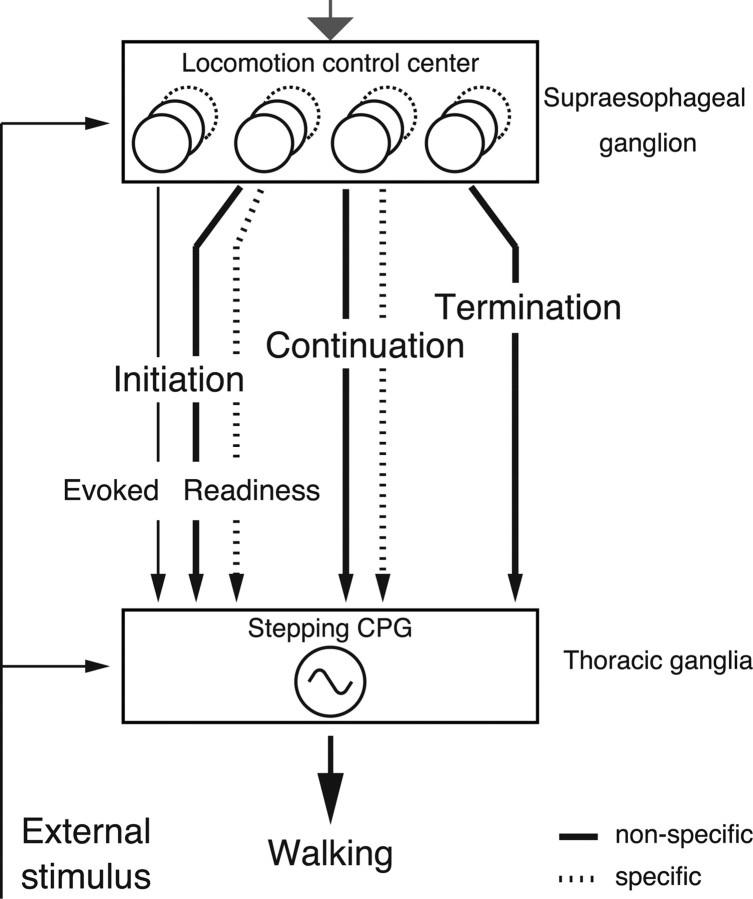Figure 10.
Schematic drawing of the current conceptual framework on the functional roles of descending units in the control of walking behavior in crayfish. Descending pathways for spontaneous initiation of locomotor behavior consist of directionally nonspecific (thick solid line) ones for readiness discharge units and specific ones for directionally specific (dotted line) ones for continuation units. The nonspecific and specific pathways are organized in parallel, and the former is recruited earlier than the latter. The pathway for mechanical stimulus-evoked walking (thin solid line) was distinct from those for spontaneously initiated walking. During walking, other units were active in a sustained way, either directionally nonspecific (thick solid line) or specific (dotted line). Some of them are responsible for maintaining walking, whereas others reflect, at least partly, corollary discharges associated with the locomotor activity. Before the termination of walking, a distinct group of descending units is recruited. The locomotor behavior of crayfish is thus controlled by descending units organized in parallel structurally and in hierarchy functionally. The gray arrow on the top indicates hypothetical input from motivational centers for feeding, mating, exploration, etc.

